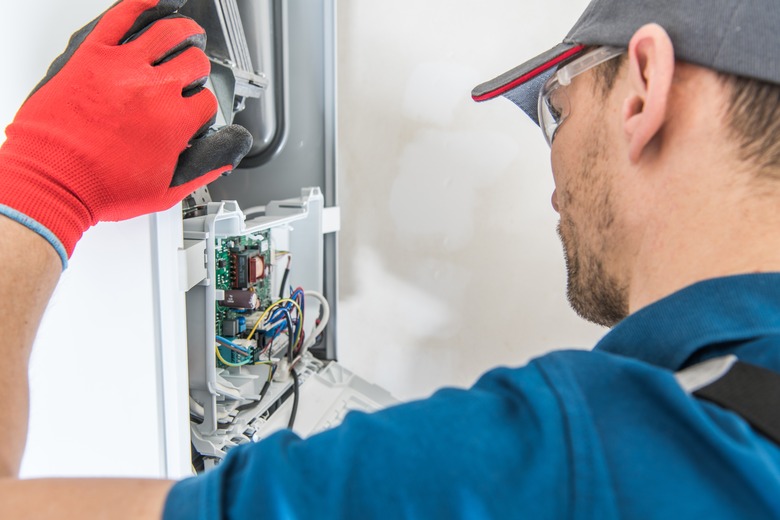How To Clean A Furnace Ignitor
We may receive a commission on purchases made from links.
Every gas furnace needs a system to ignite the gas, and for much of the 20th century, the only system available was a standing pilot, which is a flame that burns continuously and ignites the gas like a match. Late in the century, manufacturers introduced spark ignitors that were first used to ignite the pilot flame but eventually ignited the burner directly, thus eliminating the pilot. The most recent development is the hot surface ignitor, which is a resistive heating element that needs a little time to warm up and glow red hot before it can do its job.
Depending on its age and efficiency, your furnace could have any one of these ignition systems, but it would have to be very old to have a pilot, which is the least energy-efficient of all the ignitors. A high-efficiency furnace with an annual fuel utilization efficiency of 90 or more usually has a hot surface ignitor, and many standard efficiency furnaces have them too. However, if you hear clicking when the furnace is starting, the furnace has a spark ignitor. When an ignitor malfunctions, you can clean it, but they have short life spans, so it's probably time to replace it.
How to Identify a Furnace Ignitor
How to Identify a Furnace Ignitor
When you open the access panel of most furnaces, you can see the burners right in front of you. One end of each of the four burners is exposed, and the other end extends past a metal wall and into the combustion chamber. The ignitor is usually mounted on this wall close to the first burner, which is the one closest to the gas valve.
A hot surface ignitor has a white porcelain base that might be yellowed with age and a long metal bar that extends into the path of the first burner. A spark igniter looks similar, but instead of a single metal bar, it has a pair of bars that form the electrodes that create the spark. Both types of ignitors have a pair of wires attached. If you have an older furnace with a pilot, you should be able to see the flame burning inside the burner chamber, but if it's out, you can also find the pilot by following either of the two thin copper tubes attached to the gas valve.
Try Cleaning the Ignitor With Compressed Air
Try Cleaning the Ignitor With Compressed Air
Like a stove element, a hot surface ignitor will keep working even if it's dirty, but a stove element that's caked with grease won't get as hot. The same is true for a hot surface ignitor, so if you find the furnace is slow to ignite at start-up, it may be covered with carbon deposits, and you may be able to remove some by blasting the ignitor probe with compressed air. Cans of compressed air come with long applicators that look like straws, and if you point the applicator directly at the probe, the blast of air might do the trick.
If your furnace has a spark ignitor and it's working haphazardly, it too could be covered with soot, and a blast of compressed air may be enough to clean it. Compressed air can also clean a blocked pilot tube that is causing the pilot flame to burn weakly or not at all. Simply point the applicator directly at the pilot orifice and blast away.
Physically Cleaning a Hot Surface Ignitor
Physically Cleaning a Hot Surface Ignitor
It is possible to physically clean the probe on a hot surface ignitor. To do this, switch off power to the furnace either by turning off the wall switch or turning off the breaker in the main panel that controls the furnace. Disconnect the ignitor by pulling off the wires, loosen the screw holding the ignitor in place and gently lift it out. Be careful because it's fragile. Also try to avoid touching the element with your bare hands. The oil from your fingers can damage some older style hot surface ignitors.
Gently rub the ignitor probe with fine steel wool or emery cloth, being careful not to damage it. When you're satisfied that you've removed as much carbon as possible, replace the ignitor, hook up the connectors and turn on the power. Test the ignitor by turning up the thermostat to force the furnace to start. If problems persist, it may be time for a new ignitor.
